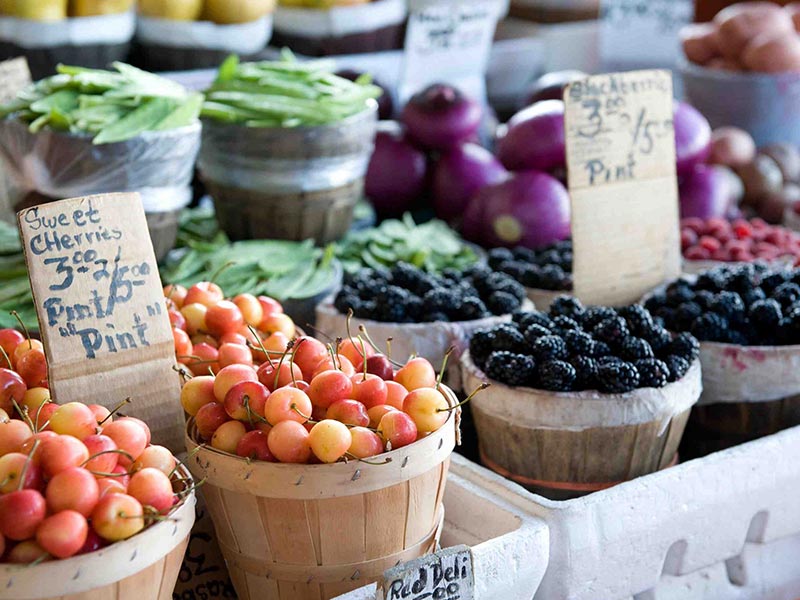Imported Food Demand is Growing in China
The Chinese diet is changing dramatically. “New era, new venues, and new products” is the current motto of China’s food and beverage industry.
In 2018, the revenue in the food and beverage industry amounts to $18 billion U.S. dollars, which is expected to show an annual growth rate of 16.4 (CAGR 2018-2022). Recent forecasts indicate that by 2018, China will import around 480 million RMB ($79 billion U.S. dollars) per year, commanding the biggest food importer in the world. At present, China is one of the world’s largest imported food markets; with between 50-60 thousand various imported brands available in the country.
Competition for imported goods is on the rise. High tax rates and increasing demand for higher quality goods are creating barriers to success for imported food providers entering the Chinese market. That said, a huge demand exists for imported food in the Chinese marketplace. Understanding the purchasing behavior of the Chinese consumer can help an international company to strategically and successfully enter and grow in this space.
Who is Buying Imported Food?
According to iClick, in China’s first and second-tier cities, 84 percent of respondents show that they have purchased imported food. Figure 1 shows that 65% of the imported food buyers are between 26 and 35 years old. Most of the buyers have an annual family income of around 200,000 RMB. This indicates Chinese middle class have high purchasing power and are interested in global products. Through research and data analysis, foreign manufacturers can tailor their products to the purchasing preferences of the different age groups.

Figure1. Age range of people buying imported food
As of 2017, customers’ motivation to purchase is changing. Most consumers are no longer purchasing imported food as gifts. Instead, they are motivated by food quality and safety. More and more consumers lack confidence in locally made products. Therefore, as the demand for high quality, safe food increases, so does the demand for imported food. Safety certification, package quality, and the country of origin of food are all factors in the consumers’ decision process.
How are Chinese Consumers Buying Imported Foods?
According to a sample survey from iClick, approximately 17% of the costumers buying imported food will choose to buy from brick-and-mortar retail stores, while 58% customers are purchasing online, and 26% are using both channels. For online sales, the primary sources in China are well-known retail platforms, including Taobao, Jingdong, Tmall, and Amazon. The second tier for sales includes vertical e-commerce chains like KaoLa. As the internet is the main source of information for the Chinese consumer, it is important that attractive and credible product information is available online, specifically on the platforms where Chinese consumer groups are aggregated. In addition to online information, friends and family recommendations also factor into the imported food purchasing decision.
The offline, brick-and-mortar retail environment is often limited to imported food stores and large supermarkets. Customers choose this channel mainly so they can fully trust the quality of the product.
What Imported Foods do Chinese Consumers Like Best?
A wide variety of foods are importing into China each year. The core segments include snacks, sweets, fruit, dairy, seafood, health foods and supplements, biscuits, oils and beverages including alcohol, coffee, and soft drinks. The snack and sweet segments have the largest market potential for imported brands based on data from iClick. In 2017, 53% of respondents have purchased imported snack foods, and 49% purchased sweets.
There is a small segment of Chinese consumers that only choose niche brand products. As such, those companies may find unique ways to target and attract these consumers.

Figure 2. Imported food Category from iClick
References:
- China Food and beverage industry: https://www.statista.com/outlook/253/117/food-beverages/china.
- Demand for imported food is growing among Chinese middle class: https://connectamericas.com/content/demand-imported-food-growing-among-china’s-middle-class
- Age range of buying imported food: http://www.foodaily.com/market/show.php?itemid=15199
- iClick Reserch Paper: http://report.iresearch.cn/report/201712/3100.shtml
Read about our market entry and expansion consulting services and our experience in the consumer products sector.


